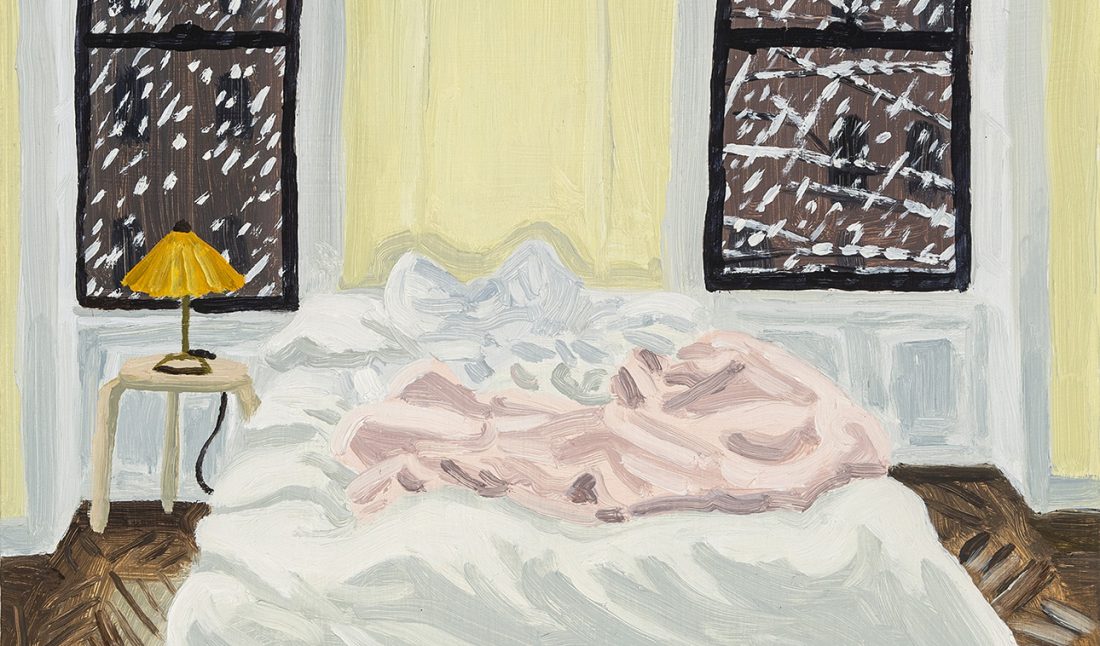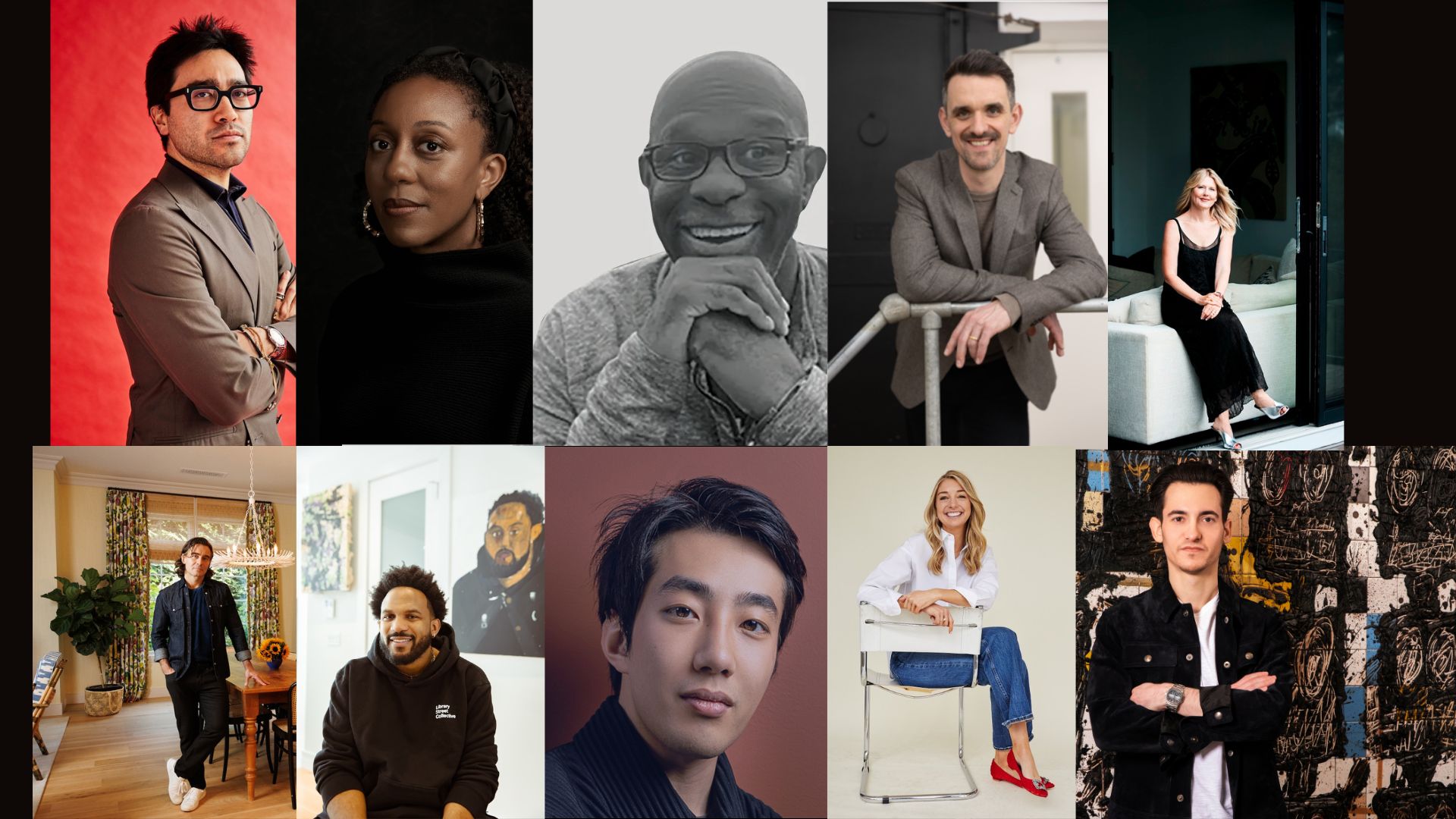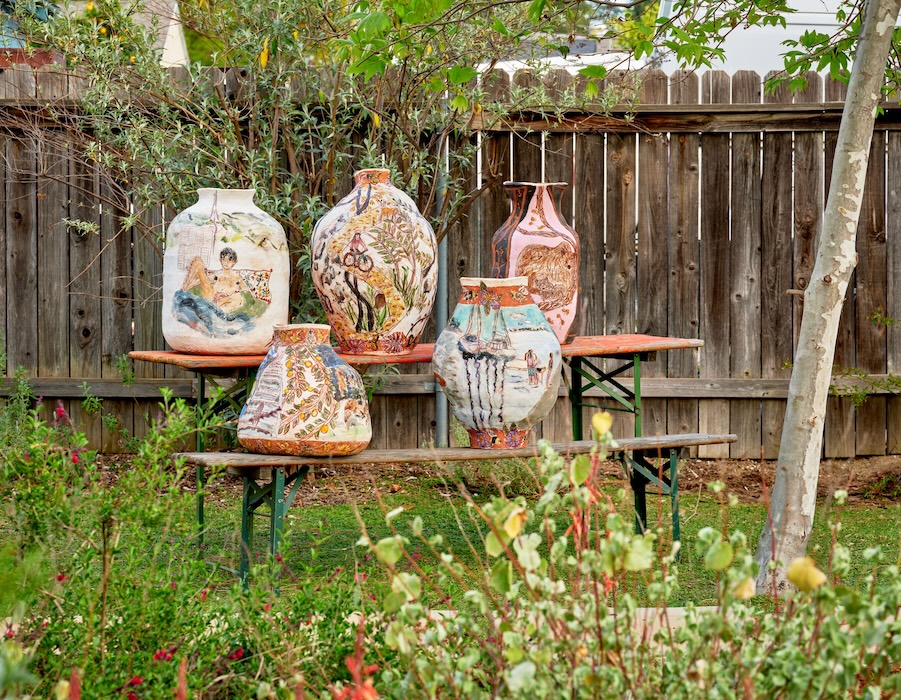Claudia Keep is looking around. She’s constantly observing her surroundings and creating remarkably poignant remembrances of the familiar and oftentimes neglected elements that encompass her daily life. Moths, rural highways, and bedroom still lifes are memorialized through the artist’s singular approach to artmaking. Small in scale, her works on panel and paper are densely packed with textures and details that incite an intense curiosity in the viewer. Where does this road lead? How big is this bug in real life? The clues Keep teases us with leave us wondering what the narrative arc of these overlooked places, objects, and living creatures could be beyond each composition.
The artist, who recently relocated from Brooklyn, NY to Vermont, has had an incredibly prolific and successful career in a relatively short period of time, and continues to push forward and expand the ways in which she lets us see into her extraordinary world. We sat down with the artist to discuss her current exhibition of paintings and watercolors “Aubade” at March Gallery in New York (on view through February 4, 2023), how she works, her move to Vermont, the close relationship she has with her gallerists, and what inspires her tremendous output and intriguing practice.
WHITEWALL: Congratulations on your second solo show at March Gallery. Can you talk about your preparations for this expansive exhibition?
CLAUDIA KEEP: Thank you so much. Well, it’s sort of my first show with March, since my other project with the Gallery was a virtual exhibition. I’ve been thinking about this show for a long time, but I suppose it was in the spring of 2022 that Phillip March Jones, the owner of March, and I came up with a more concrete concept for it. Phillip called me and read me Aubade, the poem by Philip Larkin, and we decided that would be a good organizing focus for the show.
My preparation for the show was mostly painting as much as I could. I painted with Aubade in mind in a loose sort of way. I didn’t try to illustrate the poem but turned my attention more to the themes and imagery already present in my work that shared something in common with the poem.
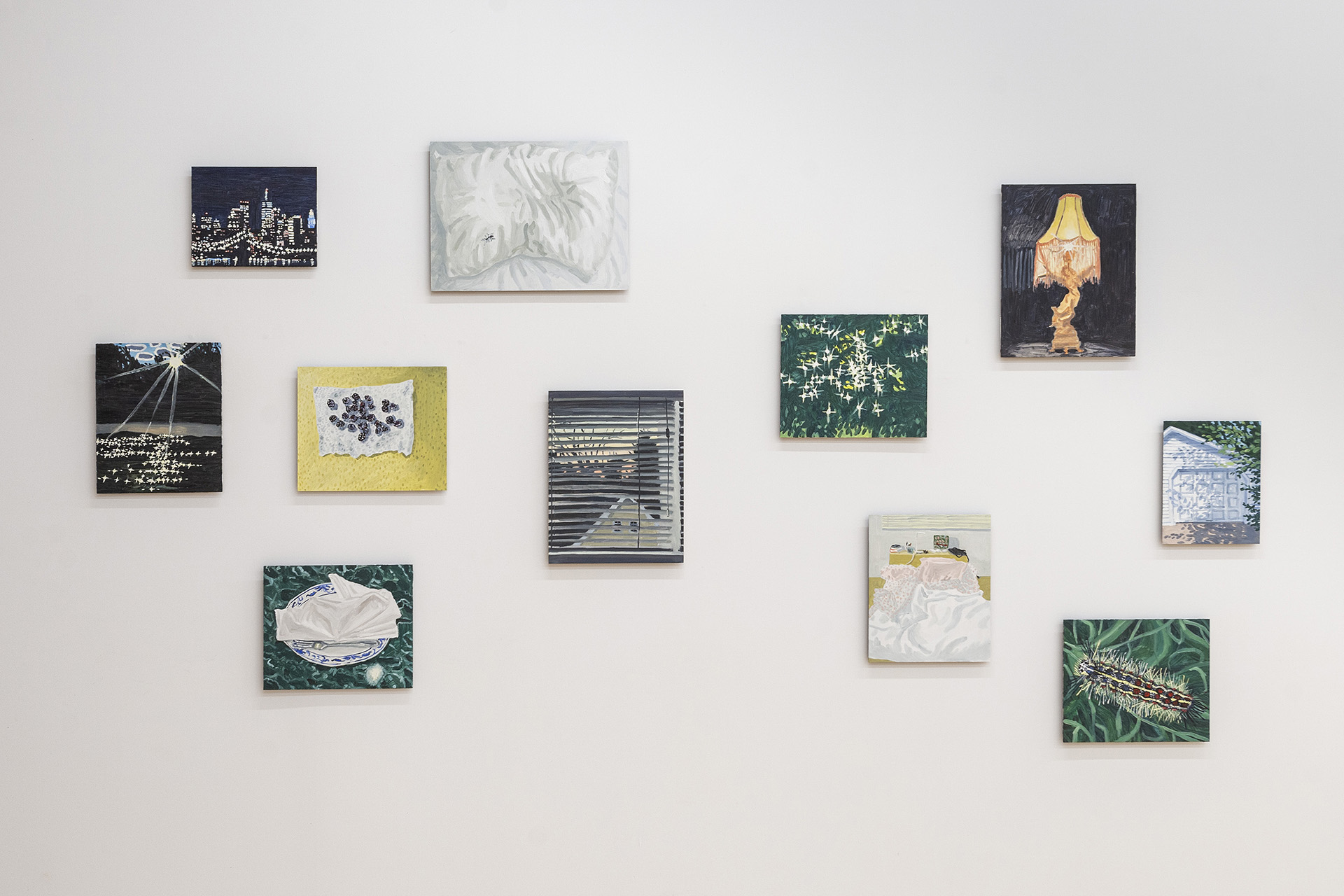 Installation view of Claudia Keep’s “Aubade,” courtesy of Cary Whittier.
Installation view of Claudia Keep’s “Aubade,” courtesy of Cary Whittier.
WW: There are certain elements that recur throughout your paintings, both in this show and in your larger practice: insects, highways, bedrooms, landscapes, cityscapes, animals and views from windows, to name a few. How did some of these subjects first find their ways into your work?
CK: My work is very local to me, in that it is drawn from my daily experiences. My subjects mostly find their way into my work by proximity.
I’ve painted cars and roads for a while—I first became really aware of the road while living in Maine. I was driving around a lot, both by myself and with friends. So, most things I saw were through car windows and along the side of the road. I also became fascinated by the color of pavement. In a funny way, the road functions a little like a sky because its color and texture are so mutable. It’s also something that is maybe a little bit ugly and awkward, which is attractive to me, and that allows me a way into landscapes that are otherwise too beautiful.
Animals and insects are examples of the continually shifting nature of perspective. I never really noticed insects until one summer when I was staying alone in a friend’s cabin on a lake in Maine. I would sit up late at night in a dining room that had screened windows. As it got dark, moths of different shapes, colors, and sizes would land on the screen, drawn to the electric light. Some of them would make their way inside too, landing on my pillows or bedside lamp.
I think you can teach yourself to pick out shapes, so now I notice insects all the time. I guess I’m sort of subconsciously looking for them. From moths, I began to notice spiders, grasshoppers, flies, caterpillars, ants, and all sorts of other things I don’t know the names of.
The bedrooms, like roads and insects, are depictions of my everyday. They also represent a personal catalog—I try to paint every bed or bedroom that I sleep in. I was skimming through a book about The Rolling Stones and I read a passage in which Charlie Watts describes how he did a sketch of every bed he slept in. I liked that idea and it inspired me to paint them in a way that perhaps edges up to a descriptive reality not found as much in my other work. The beds are a more literal effort to remember and keep track than my other work that is more sensorial.
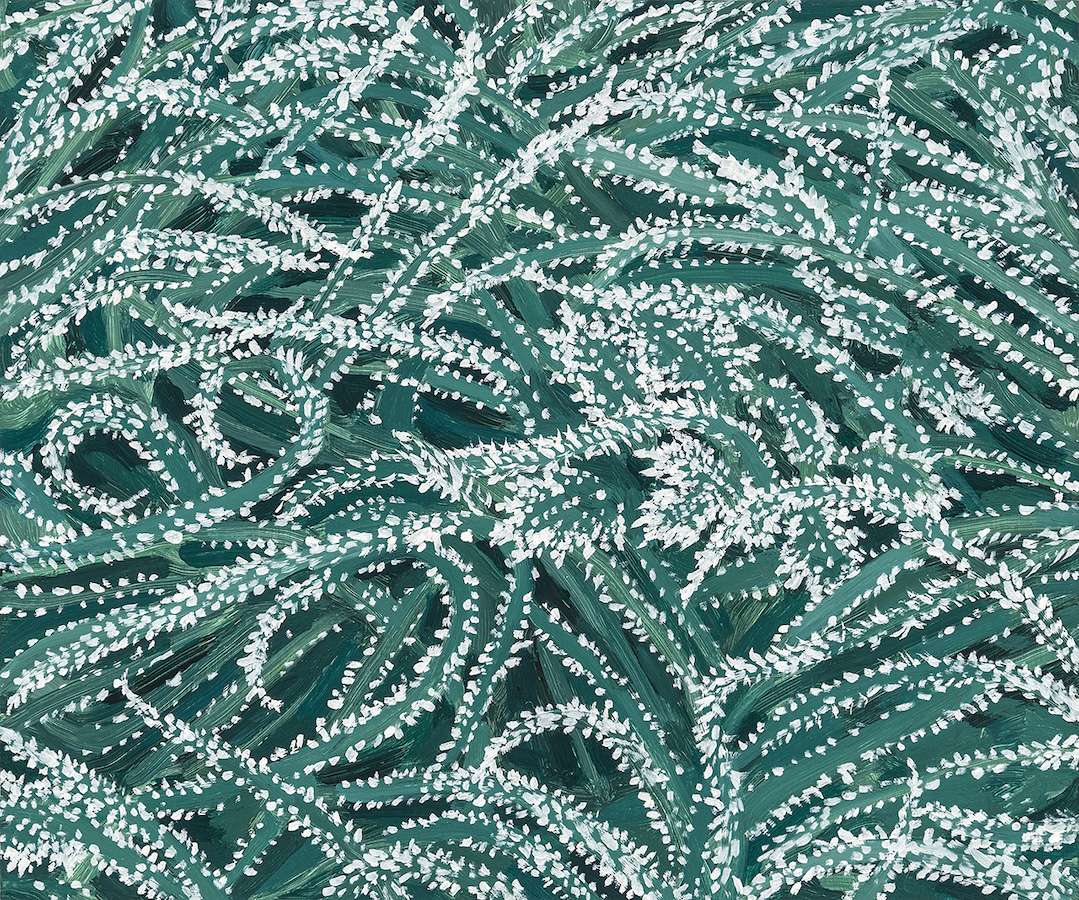 Claudia Keep, “Frost,” 2022, 10 x 12 in., oil on masonite panel; courtesy of the artist and Cary Whittier.
Claudia Keep, “Frost,” 2022, 10 x 12 in., oil on masonite panel; courtesy of the artist and Cary Whittier.
WW: Are these subjects depicted sourced from specific experiences or encounters, or from your imagination? Or both?
CK: My subjects are drawn almost exclusively from images I take with my iPhone.
I don’t like to paint from my imagination. What inspires me is the world outside of me, what I see, where I find myself, and how I feel in space. I want to capture how it feels to exist which is, for me, very much tied to external realities. Though I’m not trying to render with absolute fidelity to reality, I am trying in some way to be faithful to a real moment. That realism cannot be achieved when I try to work solely from imagination.
Usually, it’s what I see in the spaces around me that inspires me to paint, but occasionally I’ll get an idea for a painting that I then try to find in real life. I keep a list. For example, I have this idea that a white horse would make a good painting, but I haven’t seen the right composition yet. It really matters to me that I have experienced what I paint.
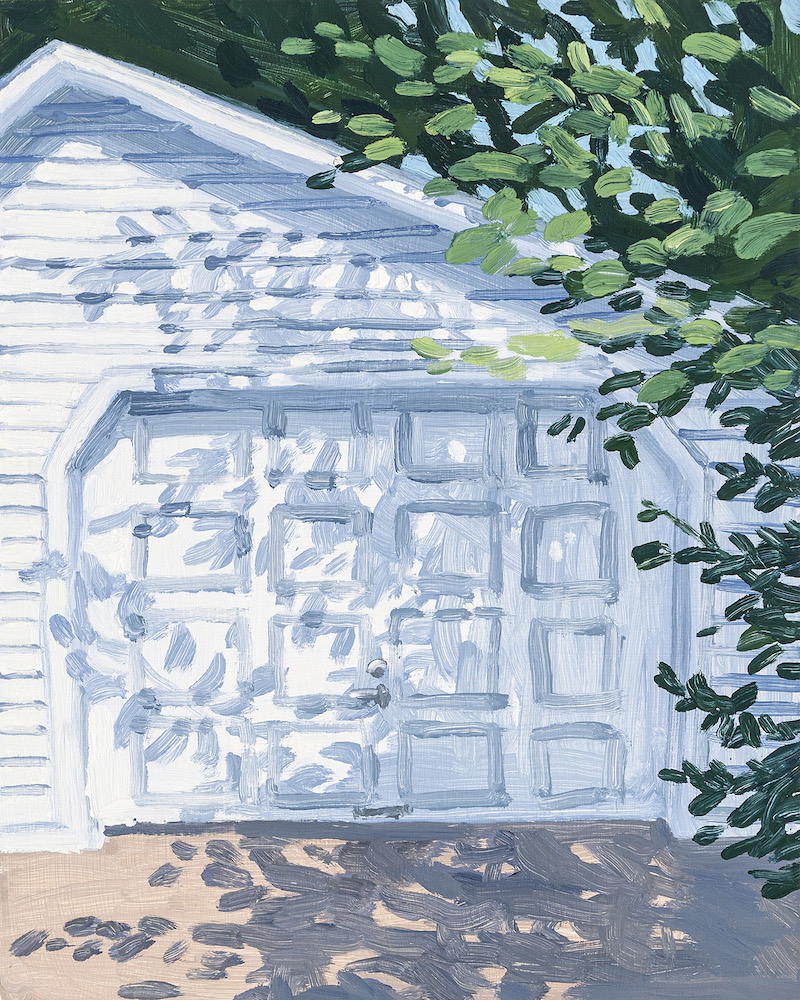 Claudia Keep, “J’s Garage In Summer,” 2022, 10 x 8 in., oil on masonite panel; courtesy of the artist and Cary Whittier.
Claudia Keep, “J’s Garage In Summer,” 2022, 10 x 8 in., oil on masonite panel; courtesy of the artist and Cary Whittier.
WW: It is amazing to see the watercolors on paper. Do you start compositions on paper that eventually might find themselves on a canvas? Or is it a bit more fluid how you work between these mediums?
CK: Thank you. I don’t have a habit of doing studies really, but I do sometimes turn the watercolors into oil paintings, and sometimes the other way around—I will paint a watercolor version of an oil painting. What informs my decisions about medium are feelings about scale and subject matter. I think certain subjects necessitate the smaller scale of the watercolor paper, the softer color palette, or the precision achievable with watercolor and gouache.
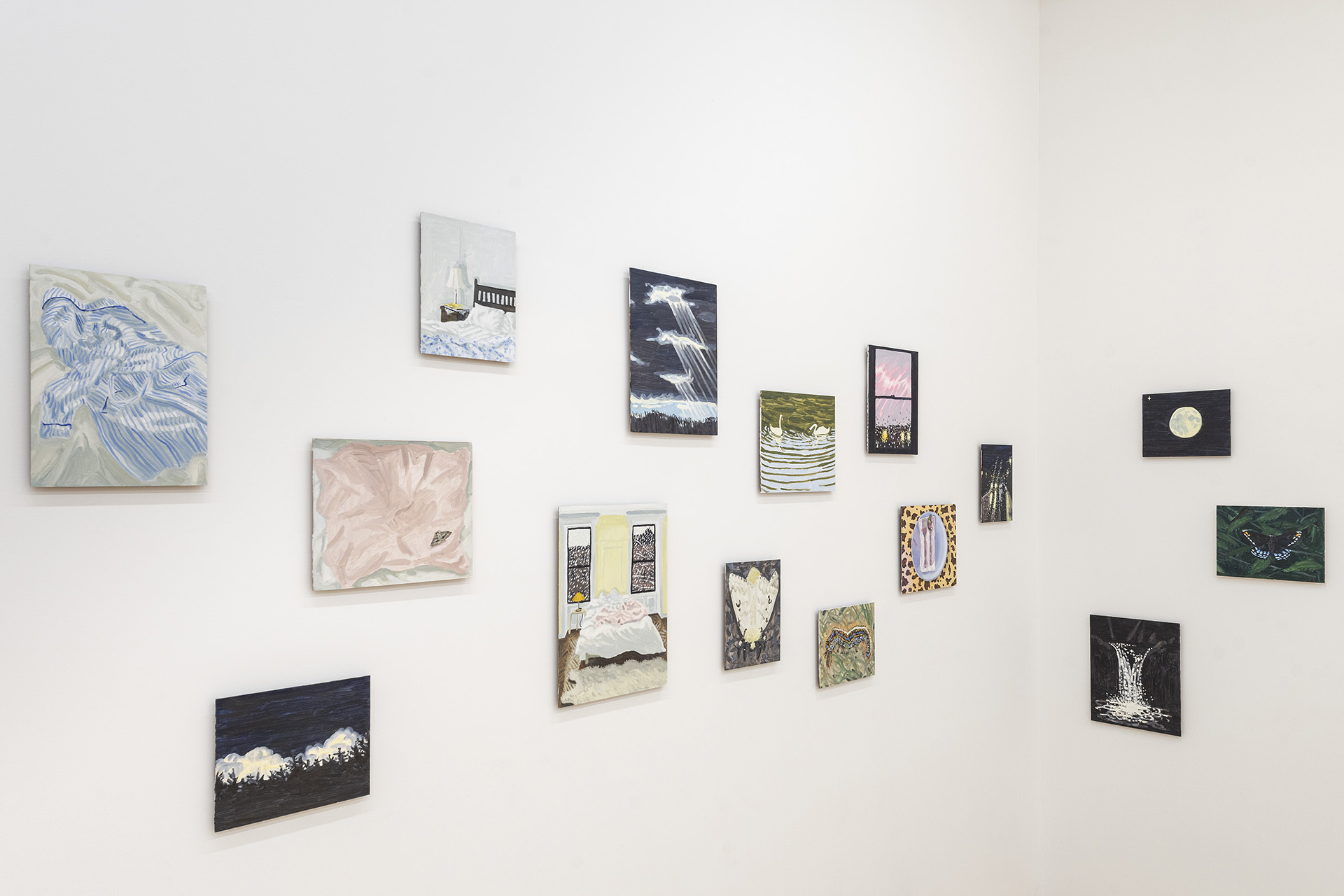 Installation view of Claudia Keep’s “Aubade,” courtesy of Cary Whittier.
Installation view of Claudia Keep’s “Aubade,” courtesy of Cary Whittier.
WW: How does writing, specifically poetry, influence your practice in connection to this show?
CK: I wouldn’t have thought particularly about writing or poetry when painting, had Phillip not introduced me to Aubade. Larkin’s words felt so resonant. Thinking about Aubade while I worked, and went through my day, I felt that I shared in the emotional reality so precisely described by Larkin. He put words to something I had always felt.
What makes working with Phillip and Maria, at March, so rewarding is that it gives definition and meaning to my work in a way that wouldn’t be possible creating alone. One of the most profound aspects of my relationships with other people is how they change the way I see. I start to notice what they notice. Their ideas wind their way into my thoughts. So, the show really represents a synthesis of my work, Larkin’s poem, and Phillip and Maria’s thoughts too.
 Claudia Keep, “Late Night Company,” 2022, 8 x 6 in., watercolor on paper; courtesy of the artist and Cary Whittier.
Claudia Keep, “Late Night Company,” 2022, 8 x 6 in., watercolor on paper; courtesy of the artist and Cary Whittier.
WW: You somewhat recently relocated from Brooklyn to Vermont. Can you talk about this move, and if it has influenced your practice in ways that manifest in this show?
CK: I moved to Vermont in July. I really love New York and Brooklyn, but I felt like I wanted to try somewhere else.
Before moving to New York in 2019, I had been living in Maine, so Vermont doesn’t feel like the radical change it might be otherwise.
My daily life is different than in New York, so the work reflects that, as I paint what I see around me. In the show there are quite a few paintings based on images from my life in Vermont, like waterfalls, berries picked off the side of the road, and clear night skies.
In Brooklyn, I painted out of my apartment and now, in Vermont, I have a separate studio to which I commute. I both enjoy the change and also miss my old studio set up. I don’t know yet if that change has greatly influenced my work. I try to be flexible and adaptable, at least so far as my work is concerned.
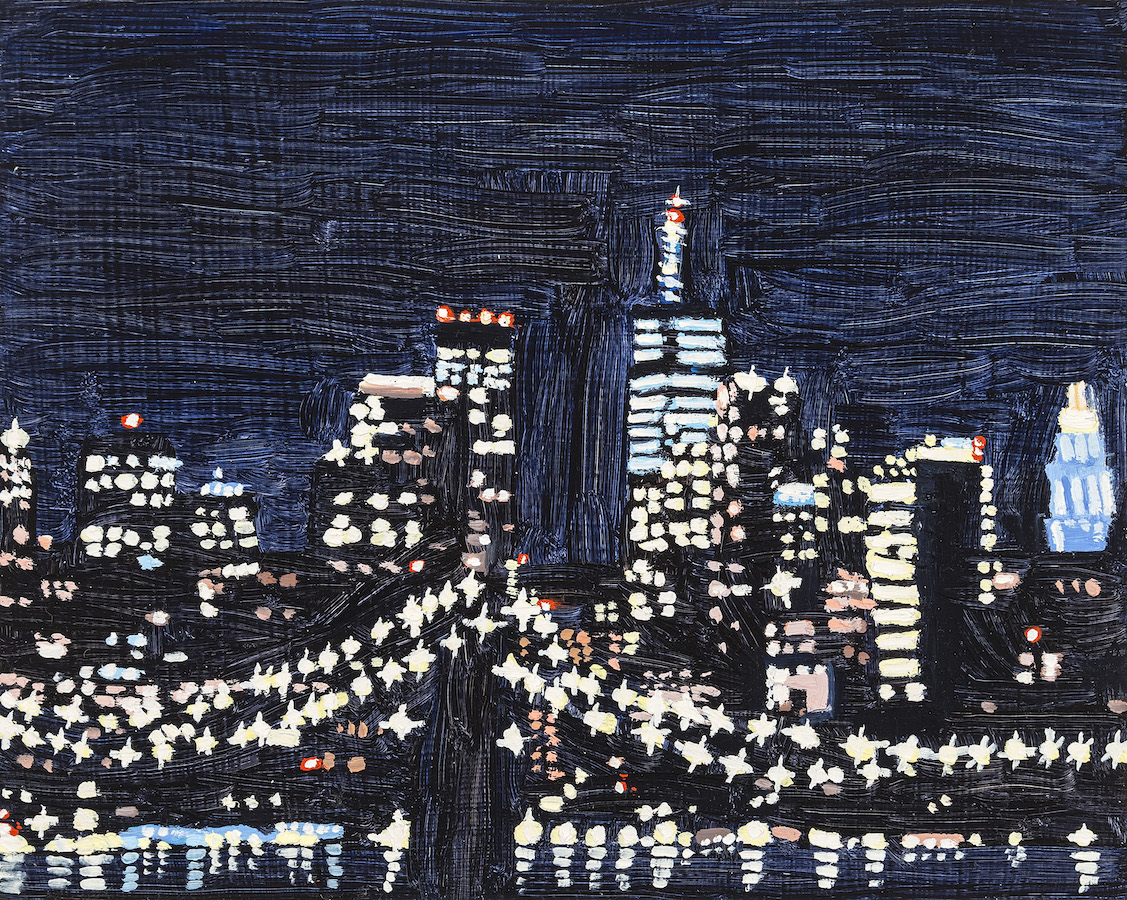 Claudia Keep, “Night Drive into the City,” 2022, 8 x 10 in., oil on masonite panel; courtesy of the artist and Cary Whittier.
Claudia Keep, “Night Drive into the City,” 2022, 8 x 10 in., oil on masonite panel; courtesy of the artist and Cary Whittier.
WW: I really love how you installed the show. Can you talk about the specific groupings you assembled and their careful configurations across the walls of the show?
CK: I can’t really take credit for the installation—it was mostly the work of Phillip and Maria. We together made decisions about what groupings looked good aesthetically as well as what made sense in a loosely narrative way.
We had discussed doing a simple hang, with paintings in a straight line around the gallery, but we felt that the work was better served, in this case, by being shown in a less traditional manner. Especially with the theme of Aubade in mind, an installation that mimicked the fragmented nature of memory and experience seemed best. We wanted something that seemed a little awkward but true, which, I think, is what my work is like.
WW: What are you most looking forward to this year?
CK: This year I’m looking forward to making more work. I’m also looking forward to seeing more good things—this year I’d like to see some praying mantises and the northern lights.
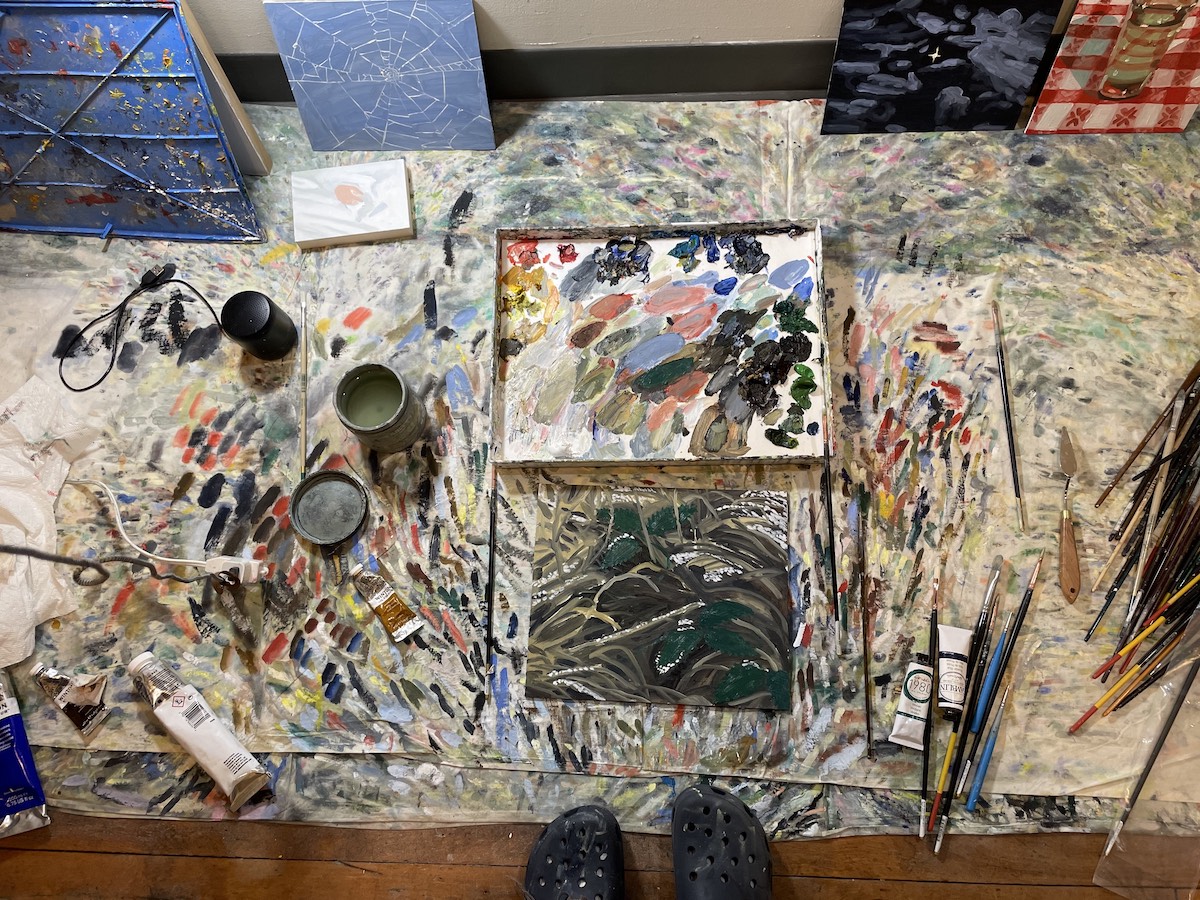 Courtesy of the artist.
Courtesy of the artist.







